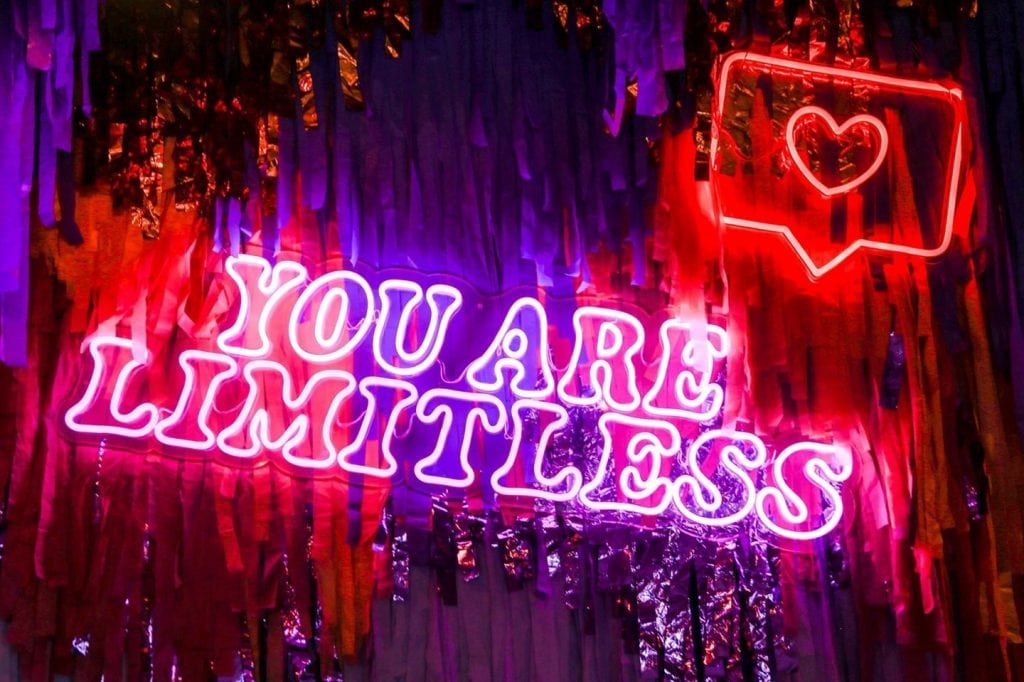Light-emitting diode strips (LEDs) are a fantastic option for providing creative and engaging illumination.
In the spirit of the holiday season, some people choose to use strip lights to outline the roof of their home or to adorn their living room Christmas tree.
Some people use strip lights to make their homes look more contemporary by running them along the cornice, tracing them over the vertical part of the stairs, or illuminating the backs of cabinets.
When compared to incandescent bulbs, LED strip lights have a low energy consumption. The power needed to run a strip light is proportional to its length and brightness. For less than $3 per year, you may operate a conventional 5-meter strip.
The cost of power to run an incandescent bulb for its entire lifetime is estimated to be between five and ten times the cost of the bulb itself.
Many nations have outlawed or are in the process of phasing out the usage of incandescent bulbs due to its low efficiency. The goal of this choice is to lower the country's overall energy usage. It's a positive development overall.
LED Lighting: The Lights of the Future
The decision to switch to LED lights is a good one even if you don't reside in a country which has banned incandescent bulbs.
There are several reasons why LED bulbs are the best option. First, they have a far longer lifespan (15,000-50,000 hours) than regular incandescent lights (700 – 1,000 hours).
If you only use your LED lights for 10 hours every day, they should last you more than 10 years. In contrast, incandescent lights only survive for about a hundred days.
The compact fluorescent (CFL) bulbs are the third alternative. However, it is only a marginal step up from the traditional incandescent light bulb. While the 10,000-hour lifespan of CFLs is a significant improvement over that of incandescents, LEDs still have the upper hand.
As they don't have a filament, LED bulbs last far longer than traditional bulbs. They don't break as easily when knocked over or dropped. LED bulbs don't contain any of the toxic mercury that's common in CFL bulbs. Breaking a compact fluorescent lightbulb can be dangerous since it releases mercury vapour into the air.
To sum up, LED strip lights share the same qualities as conventional bulbs. The fact that LED lights, even strips, don't get too hot is a major advantage. Your Christmas tree ornaments will not start a fire in your home.
As you'll see in the following paragraphs, LED bulbs are also fantastic for achieving energy savings and reducing the cost of the bills because they are so efficient.
Do LEDs Consume a Lot of Power?

You can now see how switching to LED bulbs can end up saving you money over the long run.
But how much does it cost to have one of them installed in your ceiling?
The amount of energy required to power an electric bulb is expressed in kilowatt hours. After 15,000 hours of usage, the energy consumption of an LED bulb is 127.5 kilowatt hours. Theoretically, 15,000 hours of use from incandescent lights (one incandescent bulb cannot live that long) would require 900 kilowatt hours of electricity.
The price per kilowatt hour of power varies, depending on where you live. Therefore, an LED bulb uses only $16.58 worth of electricity, but an incandescent bulb uses $117 worth of electricity (almost six times much more on your bill).
What Is the Power Consumption of a Led Strip Light?
As we've seen, LED bulbs are much more energy efficient than their incandescent predecessors. Still, what about LED strip lighting? The strip's power usage and its length are two factors to think about.
Consumption is expressed as Watts per metre and is affected by several factors.
First of all, there's a lot of illumination. The typical LED strip light has 30 individual LEDs spread out along its length. Most diodes with a high density will have 60 or 120 within the same length, however some will have many more.
Another factor is the diode's physical size. Standard specifications for diodes consist solely of a four-digit number that represents the diode's dimensions in both width and height. There will be less power consumption with the 3528 diodes (35mm wide, 28mm high), but the light output will be lower than with a 5050 light strip.
Thus, the power consumption of a high-density 3528 strip could be more than that of a standard-density 5050 strip. If you check at the packaging or product page where you plan on purchasing your strips, you should be able to see the advertised power consumption in either watts per metre (W/m) or watts per foot (W/f) (Watts per foot).
Lumens per foot or per metre is another common unit of measurement. Learn here how brightly the strip actually is. There should be about 1500 lumens per metre from a high-quality strip.
However, while this may be true in the broad sense, you shouldn't automatically conclude that a lower lumens per metre rating means less power consumption. The efficiency of individual diodes varies, so some might be brighter without requiring more power.
Then there's the question of a strip's length. Watts per metre indicates that the greater the length of the strip, the greater the power requirement. Power consumption for a 1.3W/m strip is 6.5W for a 5-meter length and 13W for a 10-meter length.
How much energy do LED strips consume? Both the light density and the size of the diodes play a role in how much power is needed to run the strip.
Why Shouldn't LED Lights Be Left On All Night?
You're debating whether or not to leave the LED strip lights on all night, but you're not entirely certain in your decision. One or more of the following problems could be causing you stress:
Start A Fire
Fire is just one of the potential threats in a dwelling or workplace. Nighttime poses a greater risk from fires, although they can be deadly at any time. Due to the collective loss of scent when we snooze, fires can go undetected for hours.
Put simply, this is the single most important reason why everyone should have smoke detectors in their houses. As a result, it's easy to see why people would worry about starting a fire due to overnight use of LED strip lights.
If you've ever touched an older light bulb or put your hand over one, you know how hot they can get.
On the other hand, LEDs are much more efficient at converting electricity into visible light. They used a semiconductor material for the generation of light. Reduced risk of starting a fire is a direct result of the lower temperatures generated by these efficient light sources.
As a result, LED strip lights are significantly safer to leave on overnight than other types of lighting.
Expensive
We're all in the same boat, with a mountain of expenses to pay. This means that finding strategies to reduce the amount of money you have to spend on these costs will free up resources that can be put to better use elsewhere.
Electrical consumption is one of the recurring costs where daily decisions can have a significant impact on overall costs. It is possible to save money in a number of ways, such as by turning off lights when they are not in use and decreasing the duration of one's hot showers.
For instance, in the event that you need to make a nighttime trip to the lavatory, you should leave a light on so that you can find your way back. When comparing the benefits and costs of various lighting options, it's clear that LED strip lights are the clear winner here.
When compared to traditional light bulbs, LEDs have a staggering 85% lower energy consumption. Because of this, you can keep those energy-efficient LED strips on all night long without worrying about racking up a hefty electric bill.
Disrupt Your Rest
The fear of the dark is real for some of us! That's why some of us keep the lights on when we sleep.
But research shows that resting with the lights on could make it harder to fall asleep because your brain won't release enough of the sleep hormone melatonin.
The good news is that this problem can be fixed. Use red light instead of white if you need to have illumination in your bedroom. Studies have shown that it can improve your capacity to get to sleep at night.
Thus, if you want to employ LED strip lights to assist you sleep, red is the colour to go with.
Do Led Strip Lights Have a Longer Lifespan?
There is a finite lifespan for light bulbs, but with proper maintenance, just about anything can last for quite some time. Traditional incandescent Christmas lights have a far shorter lifespan than their more modern LED counterparts. LEDs' long lifespan can be attributed in great part to their robust design.
Incandescent Christmas lights produce a warm glow because an electric current heats a filament within the bulb.
As more electricity flows through the filament, the light will become brighter until it is destroyed. Because of this, the electrical circuit is either interrupted or repaired.
This makes it simple to destroy your incandescent bulbs.
LED lights, on the other hand, generate current by use of a complex diode and semiconductor, which carries electrons from the negative to the positive terminal.
What LED Light Strips Can You Use All Night?
You need to invest in durable LED light strips if you want them to keep flashing brilliantly all night long. It's important to remember that LED lights can't function properly without additional components.
The lifespan of your lights is proportional to the quality of these components, particularly the driver.
Furthermore, the most common source of LED light problems is faulty parts. These will certainly break before the diode burns out.
The incandescent bulbs you're replacing with LEDs generate heat, so you don't want to buy a cheap set that can overheat due to poor power management in the drivers.
Because of this, it's crucial to track down reliable LED strips. Several possibilities will be discussed below.
Do LED Strip Lights Make Financial Sense?
You may be wondering whether the benefits of LED strip lighting outweigh the total price if you're thinking about making a large purchase of strip lights.
Buyers who are interested in economising over the course of their ownership of the product might consider LED strip lights. Even while light-emitting diodes (LEDs) have a higher initial investment than traditional light bulbs, their lower operating costs over time make them a better financial investment.
However, the greater cost of LED strip lights is likely to deter customers who are only interested in making a quick buck.
Luckily, there are choices that are easy on the wallet and still worthwhile in the long run.
LED Lighting's Advantages
When compared to incandescent or fluorescent bulbs, LED lights have many important advantages.
It has already been established that LED lights save you money and help the environment, but they also provide you the option to create a unique colour scheme for each of your rooms.
According to several studies, giving consumers more control over the colours in their homes might have a beneficial effect on their emotional wellbeing.
Strip lights have several practical applications, including the elimination of trip hazards, the enhancement of visibility, and the alleviation of eye strain when viewing electronic displays such as computer monitors and televisions.

LED strip lights are more beneficial to the typical user than conventional lighting sources in terms of energy efficiency, cost, and convenience, despite wide variances in the electricity consumption of individual lights. LED strip lights also have significant effects on one's health and well-being in addition to reducing one's carbon footprint and allowing for greater personalisation.
Conclusion
If you're looking for a novel and interesting way to illuminate your space, LED strip lights are a great choice. LED strip lights use significantly less power than traditional incandescent bulbs. Power consumption for a given length and intensity of a strip light is directly proportional. You can run a standard 5-meter strip for less than $3 annually. LED strips are the same in every way as regular bulbs.
A major benefit is that LED lights and strips don't overheat like traditional bulbs and bulbs in strips do. While an incandescent bulb uses $117 in electricity, an LED bulb only uses $16.58. The degree to which the strip shines. For every metre of length, a high-quality strip should produce around 1500 lumens. Since individual diodes' efficiencies vary, some may be more powerful than others while using the same amount of energy.
Because of this, destroying your incandescent light bulbs is a breeze. Your light bulbs' durability is directly related to the quality of their individual parts, and particularly the driver. LED strip lights are a good option for budget-conscious shoppers. When compared to traditional light bulbs, LED strip lights provide numerous advantages, including lower operating costs, longer lifespan, and easier installation. In addition to lessening one's carbon footprint and opening up more opportunities for customization, they also have substantial effects on one's health and well-being.
Content Summary
- When compared to incandescent bulbs, LED strip lights have a low energy consumption.
- The decision to switch to LED lights is a good one even if you don't reside in a country which has banned incandescent bulbs.
- As you'll see in the following paragraphs, LED bulbs are also fantastic for achieving energy savings and reducing the cost of the bills because they are so efficient.
- You can now see how switching to LED bulbs can end up saving you money over the long run.
- After 15,000 hours of usage, the energy consumption of an LED bulb is 127.5 kilowatt hours.
- As we've seen, LED bulbs are much more energy efficient than their incandescent predecessors.
- The strip's power usage and its length are two factors to think about.
- Thus, the power consumption of a high-density 3528 strip could be more than that of a standard-density 5050 strip.
- Watts per metre indicates that the greater the length of the strip, the greater the power requirement.
- Both the light density and the size of the diodes play a role in how much power is needed to run the strip.
- You're debating whether or not to leave the LED strip lights on all night, but you're not entirely certain in your decision.
- As a result, LED strip lights are significantly safer to leave on overnight than other types of lighting.
- When compared to traditional light bulbs, LEDs have a staggering 85% lower energy consumption.
- This makes it simple to destroy your incandescent bulbs.
- You need to invest in durable LED light strips if you want them to keep flashing brilliantly all night long.
- The lifespan of your lights is proportional to the quality of these components, particularly the driver.
- Furthermore, the most common source of LED light problems is faulty parts.
- Because of this, it's crucial to track down reliable LED strips.
- However, the greater cost of LED strip lights is likely to deter customers who are only interested in making a quick buck.
- Luckily, there are choices that are easy on the wallet and still worthwhile in the long run.
- When compared to incandescent or fluorescent bulbs, LED lights have many important advantages.
- It has already been established that LED lights save you money and help the environment, but they also provide you the option to create a unique colour scheme for each of your rooms.
- LED strip lights are more beneficial to the typical user than conventional lighting sources in terms of energy efficiency, cost, and convenience, despite wide variances in the electricity consumption of individual lights.
FAQs About LED Lights
LEDs have a rated lifespan of up to 50,000 hours on average. That's about fifty times as long as the average incandescent, twenty to twenty-five times as long as a regular halogen, and eight to ten times as long as an ordinary compact fluorescent light bulb. A 50,000-hour LED can provide light for over 11 years at 12 hours per day of use.
Incandescent light bulbs typically work well with LEDs. However, if there is not enough ventilation, the LEDs may overheat and shut off. When an LED is placed in an incompatible fixture, the dimming feature may not work. A compatible replacement fixture should be used in such a scenario.
Typical causes include a power outage, a faulty connection, poor circuit layout, or even rainwater seepage. Your LED lights may be malfunctioning for a number of reasons, but fortunately, most of these problems have easy fixes.
Decorative LED light strings, like those used on Christmas trees, are just as energy efficient as individual LED bulbs.
A LED's lifespan is unaffected by being turned on and off repeatedly. While frequent on/off cycling shortens the life of fluorescent lights, it has no effect on the lifespan of LEDs.

















